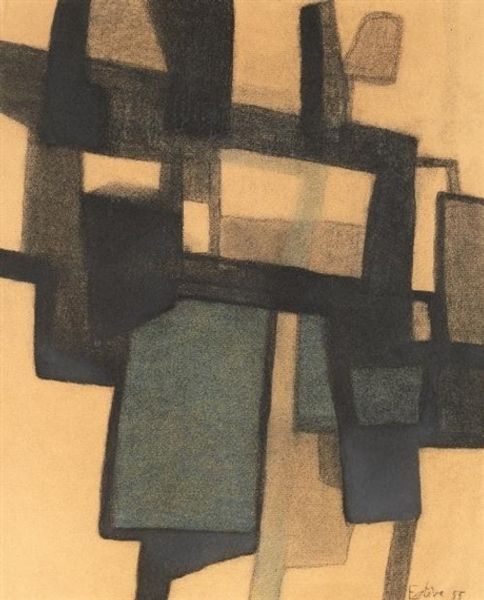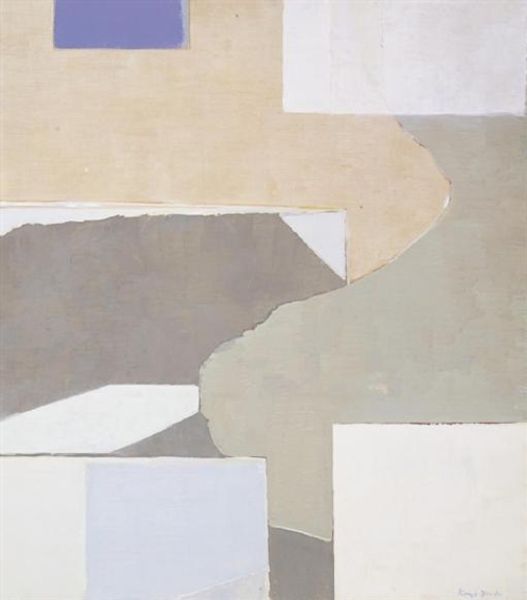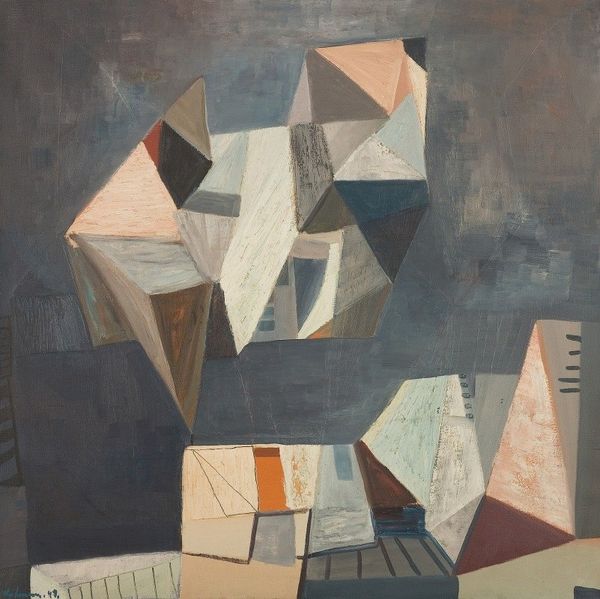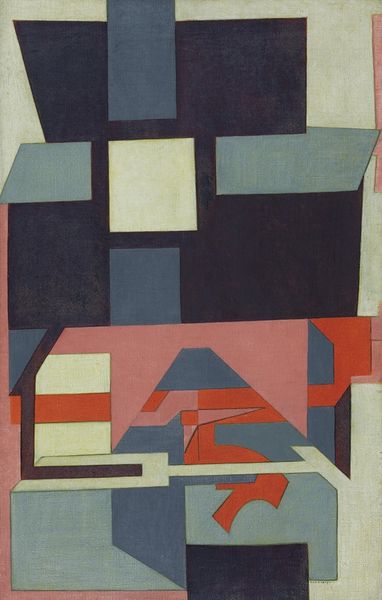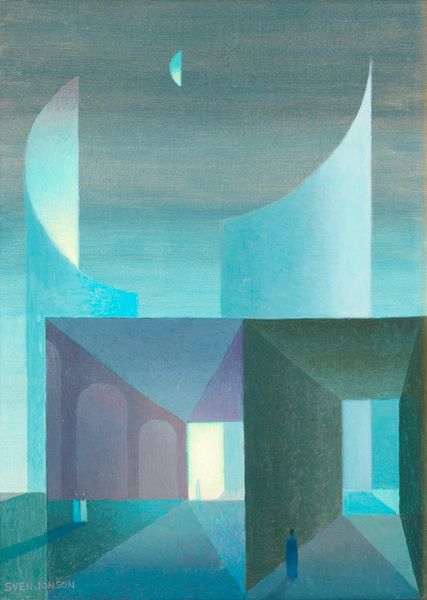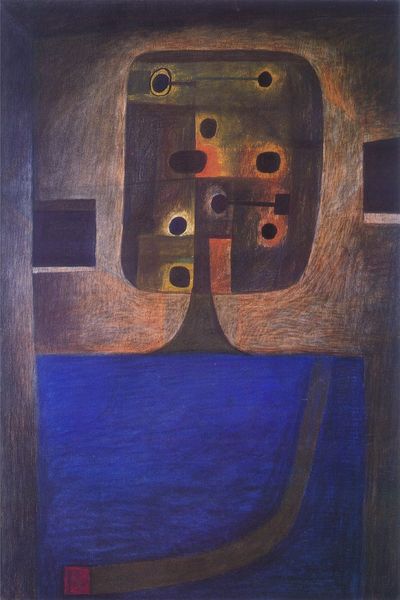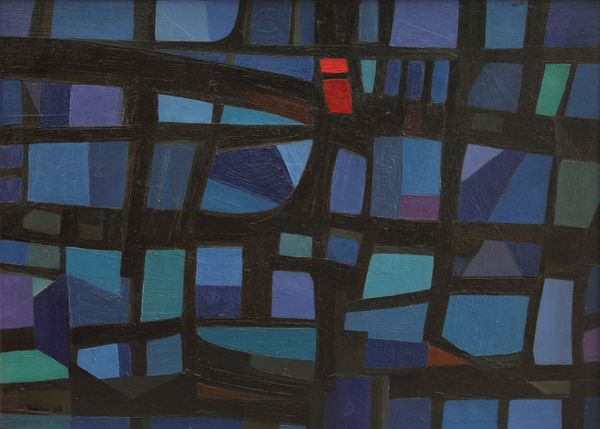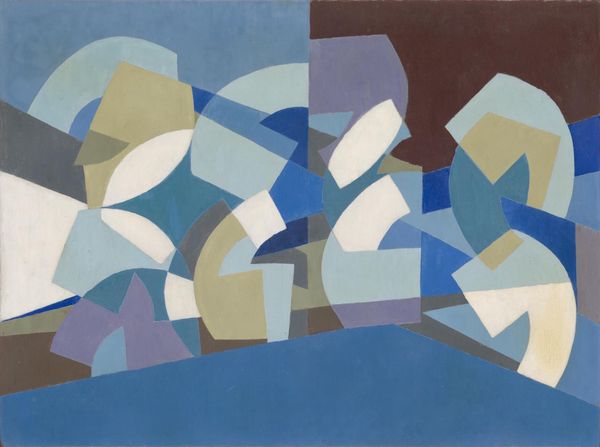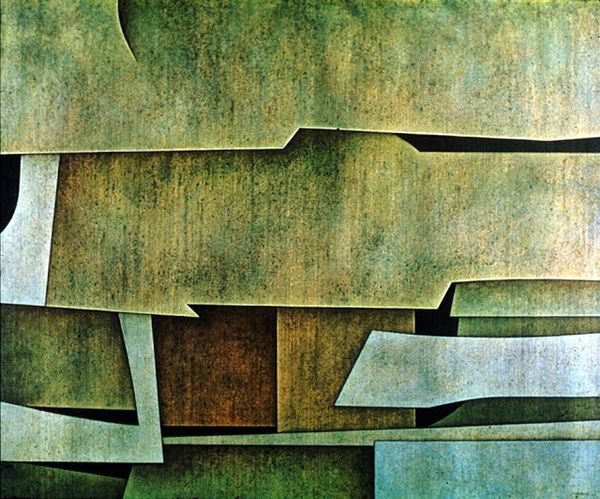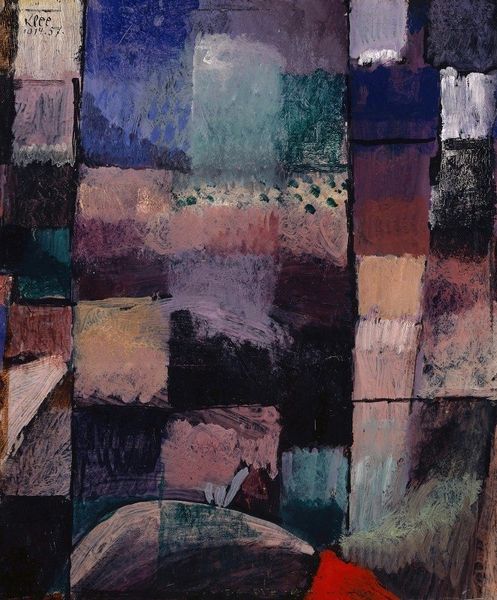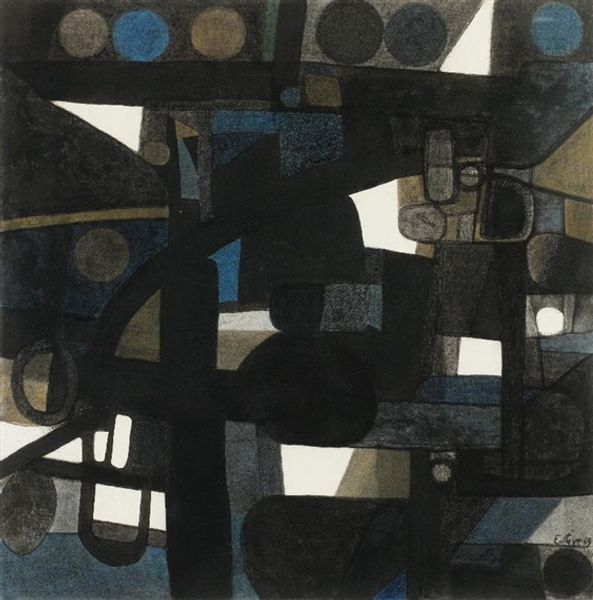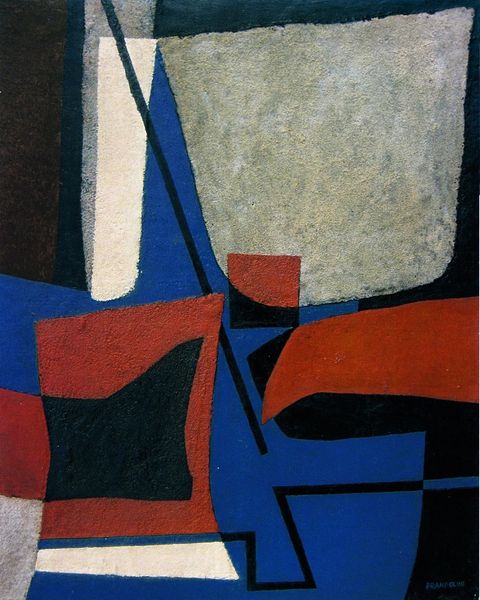
oil-paint
#
abstract-expressionism
#
abstract painting
#
oil-paint
#
landscape
#
oil painting
#
geometric
#
abstraction
#
line
Copyright: Gunther Gerzso,Fair Use
Editor: Here we have Gunther Gerzso's "Untitled," created in 1958, using oil paint. The geometric shapes layered on the canvas give off this very architectural, almost fortress-like feeling. What can you tell us about it? Curator: Well, look closely at the weave of the canvas, the facture of the paint. This isn't about illusionism, it's about the labor, the material presence. Abstract Expressionism is often divorced from the world of production, but Gerzso's focus on geometry feels like he's engaging with the industrial landscape emerging at the time. Editor: So, it's less about emotional expression and more about... the materials themselves reflecting the world? Curator: Exactly. Consider the way he's built up the layers of oil paint. Are those fortress walls, or are they the layered effects of post-war manufacturing techniques? The materials become signifiers of the changing landscape of labor and production. How does the title, or lack thereof, influence this? Editor: Interesting. Because it is "Untitled," it opens the work to broader interpretations rooted in its materials rather than dictating a specific emotional read. So, no title forces us to focus on the paint, canvas, and process. Curator: Precisely. The lack of a defined subject pulls our gaze towards its making, the way Gerzso manipulated and positioned these materials in dialogue with postwar consumerism and its excess of production. We should remember the rise of plastic and its role at that time. Editor: This makes me consider how abstraction itself was a kind of material response – a pushing back against traditional forms, mirrored in the reshaping of industry at the time. Thanks, that’s given me a totally fresh way of looking at Abstract Expressionism. Curator: My pleasure! It's about questioning assumptions, connecting the aesthetic object to the economic and social forces that shape its creation.
Comments
No comments
Be the first to comment and join the conversation on the ultimate creative platform.
